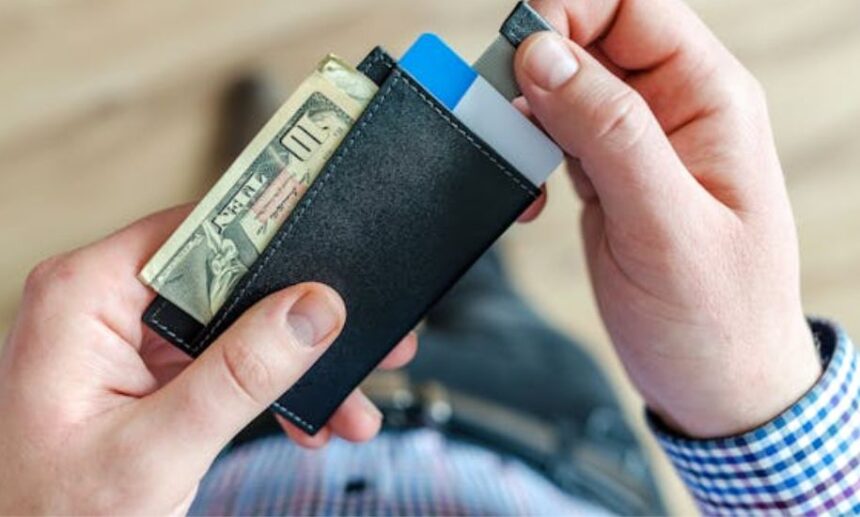The concept of a “dollar card” is broad, encompassing both innovative physical marketing tools and digital rewards systems. Whether it’s physical dollar cards used for guerrilla marketing or digital versions like gift cards or reward systems, these cards play a significant role in modern consumer interactions. This article will explore various aspects of dollar cards, including their use in marketing, digital rewards, and how they benefit both businesses and consumers.
What is a Dollar Card?
A dollar card can be defined in different contexts, but the most common definition involves a marketing tool that resembles a real dollar bill. Dollar cards, also called drop cards, are typically used in guerrilla marketing to catch people’s attention and make them curious about a business. When someone finds a dollar card, they may initially believe it to be money, but upon closer inspection, they find information about a business or service. This clever tactic has proven effective in reaching a broad audience with minimal costs.
In the digital realm, dollar cards refer to reward systems, such as those offered by companies like Microsoft Bing, where users can earn points through searches or activities. These points are redeemable for dollar-value gift cards, furthering the concept of the dollar card.
Dollar Cards in Guerrilla Marketing
Dollar card marketing is a creative, eye-catching strategy often employed by small businesses looking to expand their customer base. The cards are designed to resemble real dollar bills—sometimes in denominations of $1, $5, $10, $20, or even $100. These cards can be scattered in public places like parks, grocery stores, or parking lots, where people will inevitably pick them up, thinking they’ve stumbled upon money.
The goal of dollar card marketing is to create a memorable interaction. Imagine walking through a supermarket, spotting what looks like a $100 bill on the floor, and picking it up. Upon realizing it’s a marketing tool, you’re left with an impression of the business behind it. Unlike traditional business cards, dollar cards offer a unique and engaging experience, often leading to higher retention rates for brand information.
Businesses that use dollar card marketing can benefit from its low cost and wide reach. It’s a highly effective guerrilla marketing strategy, allowing companies to bypass expensive advertising mediums like TV or billboards while still reaching potential customers directly.
Digital Dollar Cards and Rewards Programs
In addition to physical dollar cards, digital variations are becoming increasingly popular. One prime example is Microsoft Bing’s rewards system, where users can collect points through online searches and activities. These points can then be redeemed for dollar-value gift cards to various retailers. The concept of earning digital “dollars” through small online tasks provides a modern twist on the traditional dollar card.
For many consumers, the ability to earn digital dollar cards through everyday activities like browsing the internet or answering quizzes is an attractive way to save money. The ease of participation—simply using a search engine—combined with the tangible reward of a gift card makes these programs highly appealing.
Microsoft Bing is not the only company offering such a program. Dollar General, for instance, runs its DGCustomerFirst survey, where customers can win $100 gift cards by providing feedback on their shopping experience. This is another form of digital dollar card, where the incentive is tied to customer interaction and feedback.
Advantages of Using Dollar Cards in Marketing
There are several advantages to using dollar cards in marketing, particularly for small businesses. First and foremost is the cost-effectiveness. Dollar cards are inexpensive to produce, especially when compared to other forms of advertising like digital ads or printed flyers. A small investment in printing dollar cards can lead to a significant return in customer engagement and interest.
Moreover, the psychological effect of dollar cards is significant. People tend to respond more strongly to unexpected, engaging stimuli. When they pick up what they believe to be money, they experience a moment of excitement, which quickly shifts to curiosity as they discover the real purpose of the card. This emotional reaction helps the marketing message stick in their minds.
Additionally, dollar cards are often passed along or shown to others, expanding the reach of the campaign. A person who picks up a dollar card might show it to friends or family, leading to a ripple effect of exposure. This organic sharing amplifies the impact of the marketing campaign without any additional cost to the business.

How to Use Dollar Cards in Your Business
If you’re considering using dollar cards for your business, it’s essential to approach the strategy thoughtfully. Here are some tips for successful dollar card marketing:
- Design the card carefully: Ensure that your dollar card resembles real money as closely as possible to attract attention. Include clear, concise information about your business, such as a phone number, website, or offer.
- Distribute strategically: Place dollar cards in high-traffic areas where they are likely to be found. Grocery stores, parks, or event venues are excellent places to leave them.
- Monitor the results: Keep track of the response to your dollar card campaign. Are people calling the number or visiting the website you’ve listed? This feedback will help you refine your strategy for future campaigns.
- Use dollar cards in combination with other marketing efforts: While dollar cards are effective on their own, combining them with other marketing methods, like social media or email marketing, can boost their impact.
Digital Dollar Cards: A Modern Twist
The rise of digital dollar cards offers businesses and consumers new ways to engage in marketing. Companies like Microsoft Bing and Dollar General use reward-based programs to incentivize customer interaction. By participating in surveys or using search engines, consumers can accumulate points and redeem them for dollar-value gift cards.
For businesses, this represents an opportunity to gather customer insights while offering something of value in return. The digital nature of these dollar cards means they can be distributed on a large scale without physical costs, making them a cost-efficient tool for modern marketing strategies.
Conclusion
The dollar card, in both its physical and digital forms, is a powerful marketing tool. Whether used as a guerrilla marketing tactic or as part of a rewards program, dollar cards can generate interest, attract customers, and increase brand awareness. For small businesses, dollar cards offer an affordable way to compete in a crowded marketplace, while for consumers, they provide opportunities to save money and engage with brands in fun, unexpected ways.
As marketing continues to evolve, the dollar card remains a versatile and impactful strategy, bridging the gap between physical and digital engagement. Whether you’re looking to grow your customer base or reward loyal consumers, the dollar card offers a creative solution that gets results.





